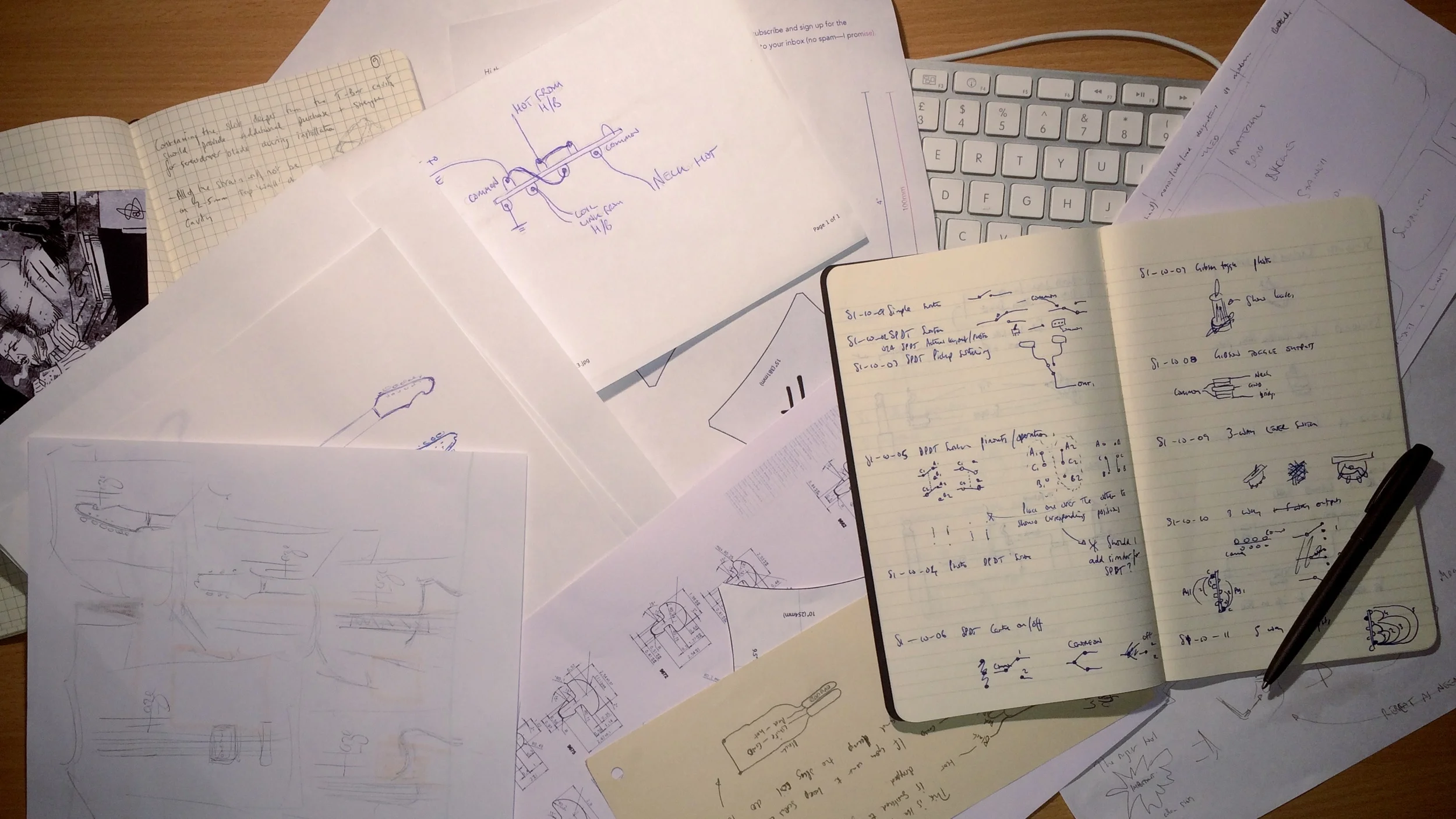My new book, Complete Guitar Wiring will launch soon. Thought I’d write a little something as an early introduction and it was a good excuse to look at how guitar circuits work. Check it out…
Read MoreGetting a Takamine preamp out of the guitar body is something that’s confusion to many. There are no obvious screws or clips. There’s a hole that might do something but, just one. What gives?
Read MoreTaylor’s Expression System preamp mounts very sleekly in the side of their guitars. If you ever have to remove one, though, you hit some bushings that can cause head-scratching. Check out the best (and safest) way to remove them.
Read MoreAnother look at the integrated saddle/piezo pickup. You’ll most often find these in Takamine guitars but there are variants around. Like this Epiphone pickup. The action needed a little finessing here and this version presented it’s own challenges.
Read MoreAdvances in piezo materials paved the way for an evolution in under-saddle transducer pickup design. Let’s see the main types available now…
Read MoreLowering the action on an acoustic guitar is generally a (relatively) straightforward task.
Unless, of course, your guitar has a Takamine-style ‘integrated pickup’. Then you need to regroup.
Get the low-down…
Read MoreElectric guitar pickups turn string vibrations into electricity. So do the piezo pickups often used in acoustic. The only difference is the way they do it.
We’ll talk more about the properties and problems of different acoustic pickups over the next few weeks so, for now, a piezo primer…
Read MoreMore stuck stuff. A slightly unusual one, this week.
If you work on (or if you have) an older Gibson you’ll occasionally come across a guitar with a curious output jack…
Read MoreYour pickups are too high.
Well, if you're like most guitarists and bassists, your pickups are too high. Sure, it's all about the power but there are a number of drawbacks to setting your pickups too close to the strings.
Check it out…
Read MoreIf you've ever had to wire or replace components inside a hollow or semi-hollow guitar, you probably know what a pain it is. You have to fish all the wiring and components through the f-hole to work on them. Even worse, then you have to get them back. It's like building a ship in a bottle but there are some tricks to make things a little less annoying.
Read MoreSo here's the problem:
You’ve got your guitar plugged in. You’re not playing it and there’s a noise. A hum. It’s not terribly pleasant.
Thing is, you touch the strings and it’s gone.
The response: It's ok. It's not a problem. That’s all as it should be. Guitars pick up interference and that comes out the amp as a hum. When you touch the strings, it's supposed to get quieter.
Because, 'grounding'.
Read MoreIn an electric guitar or bass, it's usually necessary to 'ground' the strings.
By this, I mean that all the strings should have a path to ground — a wire that connects them to a ground point inside the instrument. Usually that ground point will be the back of a pot or the sleeve of the output jack.
When it's properly grounded, you can touch the strings of your guitar and you'll usually hear the background hiss reduce. Yay.
There’s a common misconception that by touching the strings you are grounding the guitar.
Read More












